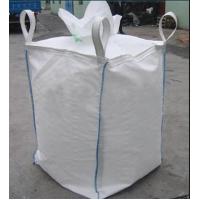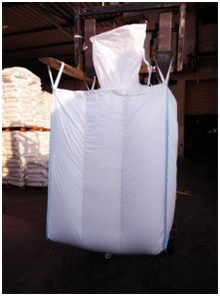THE MS GROUP is a premium jumbo bag supplier based in India. The company produces FIBC bags that are extremely durable and very efficient for storing materials like flakes, granules and powders. Our FIBC bags can withstand the toughest of climatic conditions and are also safe from sudden temperature fluctuations.
What are FIBC bags?
FIBC or Flexible Intermediate Bulk Containers are basically large sized bags which are made out of polypropylene which has been woven. These FIBC bags are generally used for the transportation or storage of dry products. In common terms, they are more popularly known as ‘Jumbo bags’ and are used mainly by food production and pharmaceutical industries.
Usually, these FIBC bags can hold weight of about 2000 to 4000 lbs. However, these dimensions can change depending on the requirements and preferences of customers.
What are the Differences Between Types A, B, C and D FIBC Fabrics?
Generally, people who make use of FIBC bags are concerned about control of static electricity which is when electric charges are imbalanced within certain materials. When these jumbo bags are filled to capacity or when they are rapidly discharged with fine powders, it can lead to static electricity build up. It is crucial to prevent or remove electrical charge while packing any sort of combustible or flammable materials or when combustible dust is likely to be present in an environment.
Type A Bags
Type A FIBCs do not provide any sort of protection from static electricity and hence, they should definitely not be used for the storage and transportation of any flammable material. These types of bags are generally made from polypropylene which is woven. Type A FIBCs are also usually made from fabrics which are non-conductive in nature.
- Type A FIBC bags can safely be used for the transportation of non-combustible materials.
- Under no circumstances should combustible gases or solvents be kept in close proximity to these bags.
- Never transport any sort of flammable products in Type A FIBC bags.
Type B Bags
These FIBCs have a low breakdown voltage which does not generally exceed 6 kV. This is quite effective for the prevention of explosive dust-air mixtures from igniting. However, these bags cannot dissipate static electricity and hence cannot be termed as ‘antistatic’.
- Type B FIBC bags are perfect for the transportation of powders which are dry and flammable. They can be transported very safely.
- However, remember that no flammable gases or solvents should be kept in close proximity to the bag.
- Type B FIBCs do not have any interwoven materials with conductive properties.
Type C Bags
This is also known as Conductive Jumbo FIBC is produced from fabric which is non-conductive in nature but has conductive threads which are interwoven. Type C FIBCs are safe to use in environments which have explosive gases or dusts around.
- Keep in mind that during the process of filling and emptying these bags, they must be kept electrically grounded.
- Flammable powder substances can be safely transported in these Type C FIBC bags.
- Also, these Type C FIBC bags can be used safely in the presence of gases or solvents which are flammable.
Type D Bags
These are also known as Dissipative FIBC bags and are generally made from material which is antistatic in nature. It is composed of antistatic and static dissipative yellow threads. These bags do not really require to be grounded.
- These materials prevent incendiary sparks from taking place.
- Combustible substances can easily be packaged, stored and transported in these types of bags.
- Type D FIBC bags are most commonly used for the transportation of flammable powder substances.
- They should never be used in cases where the surface is covered in grease or water because these are conductive materials.
What Types Of Construction Available For FIBC?
Four-Panel
A 4-Panel jumbo bag constructed from 4 separate fabric yarn panels, interwoven together at the perimeter of the fabric yarn, to form a square shape flexible container box. To complete the process of constructing the bag, a fabric yarn sheet, used to construct the square bottom of the bag; thus creating the packaging solution.
U-Panel
A large piece of fabric yarn flexed in a “U” shape and, two side panels of fabric are, sewn to each of the opposite sides. Once constructed; attains square shape when filled. Form stability improved further by providing inner baffles. U-panel bags serve as a cost-effective bulk packaging solution and, high safe working loads with much-improved durability.
Circular Bag
A valuable alternative to four-panel bags. Constructed using a circular loom and hight adjusted cuts are made to give a smooth confined shape with no vertical seams. The tubular body design is ideal as a linerless option for fine and hygroscopic materials. They are circular in name only and will take a regular “square” shape when filled with product.
Baffle
To further Improve form stability, stackability and, storage space, special internal fabric baffles (panels of fabric sheet) are sewn to adjacent corners internally. This helps retain the cubic shape of the bag, generally employed to Four-Panel or U-Panel bags.




